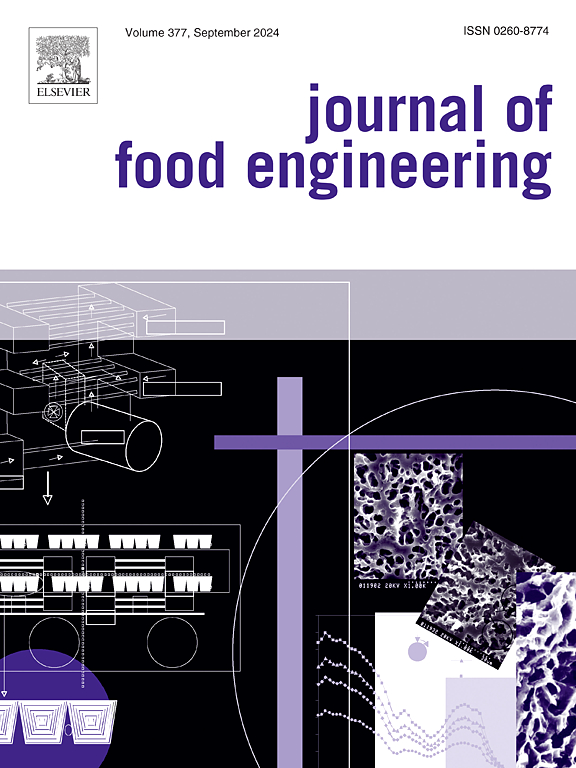利用纳米藻酸盐作为新型递送载体的藻蓝蛋白和虾青素的共递送:色素浓度对其理化、结构和体外消化特性的影响
IF 5.8
2区 农林科学
Q1 ENGINEERING, CHEMICAL
引用次数: 0
摘要
虾青素和藻蓝蛋白对健康有益,但它们的稳定性和生物利用度有限,限制了食品工业的使用。本研究探索纳米螯合物在模拟胃肠道条件下提高这些色素的稳定性和控制释放。共载5 mg虾青素和5 mg藻蓝蛋白的纳米藻酸盐包封效率最高,粒径最小,多分散指数最低,抗氧化活性最高。在4°C和25°C下,共递送的纳米螯合物在28天内都表现出显著的稳定性。扫描电镜显示了表面不均匀的圆柱形结构,支持动态光散射结果。DSC和FTIR光谱证实了纳米藻酸盐的成功形成以及它们有效地共同递送虾青素和藻蓝蛋白。Laurdan荧光和XRD分析表明,Ca2+降低了膜的流动性,增强了膜的脂质堆积。细胞转移主要驱动虾青素和藻蓝蛋白的释放,这使得纳米藻酸盐成为食品工业中控制色素释放的一个有前途的进展。本文章由计算机程序翻译,如有差异,请以英文原文为准。
Co-delivery of phycocyanin and astaxanthin using nanocochleates as a novel delivery vehicle: Effects of pigment concentration on physicochemical, structural, and in vitro digestion properties
Astaxanthin and phycocyanin offer health benefits, but their stability and bioavailability are limited, restricting food industry use. This study explores nanocochleates to improve stability and enable controlled release of these pigments in simulated gastrointestinal conditions. Nanocochleates co-loading 5 mg of astaxanthin and 5 mg of phycocyanin achieved the highest encapsulation efficiency, along with the smallest particle size, lowest polydispersity index, and highest antioxidant activity. The co-delivered nanocochleates showed significant stability over 28 days at both 4 °C and 25 °C. SEM revealed cylindrical structures with uneven surfaces, supporting dynamic light scattering results. DSC and FTIR spectroscopy confirmed the successful formation of nanocochleates and their effective co-delivery of astaxanthin and phycocyanin. Laurdan fluorescence and XRD show that Ca2+ reduces membrane fluidity and enhances lipid packing. Fickian transfer primarily drives the release of astaxanthin and phycocyanin, making nanocochleate a promising advancement for controlled pigment release in the food industry.
求助全文
通过发布文献求助,成功后即可免费获取论文全文。
去求助
来源期刊

Journal of Food Engineering
工程技术-工程:化工
CiteScore
11.80
自引率
5.50%
发文量
275
审稿时长
24 days
期刊介绍:
The journal publishes original research and review papers on any subject at the interface between food and engineering, particularly those of relevance to industry, including:
Engineering properties of foods, food physics and physical chemistry; processing, measurement, control, packaging, storage and distribution; engineering aspects of the design and production of novel foods and of food service and catering; design and operation of food processes, plant and equipment; economics of food engineering, including the economics of alternative processes.
Accounts of food engineering achievements are of particular value.
 求助内容:
求助内容: 应助结果提醒方式:
应助结果提醒方式:


